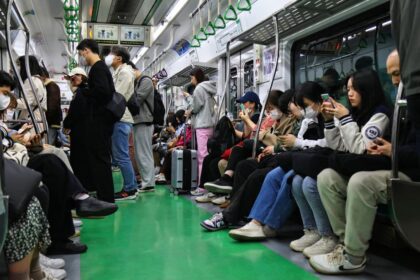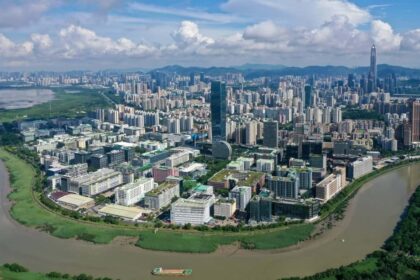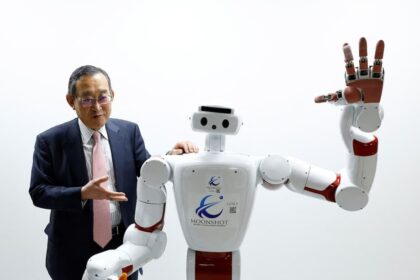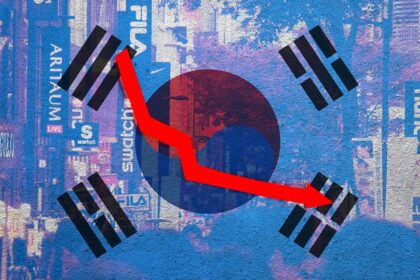A new milestone for Korean campuses
South Korea has crossed a long anticipated threshold in global education. Education Ministry data show 253,400 international students enrolled at Korean universities as of April 2025, an increase of 21.3 percent from a year earlier. The surge puts the government on a clear path toward its Study Korea 300K goal, which aims for 300,000 students by 2027 and a place among the world’s top 10 study abroad destinations. Degree programs are driving the growth. Of the total, 179,000 students are pursuing full degrees, equal to 70.7 percent, and that figure grew 22.6 percent in a single year.
- A new milestone for Korean campuses
- Where students are coming from and what they study
- Why the growth is accelerating now
- Beyond Seoul, a regional recruitment push
- Language, visas and the student experience
- How Korea compares globally
- Universities face financial and data constraints
- Can campuses turn students into long term talent?
- What to Know
As campuses expand their international reach, student interests are changing. Humanities and social sciences still attract the most students, but their share has slipped to 63.9 percent. STEM fields are gaining momentum, accounting for 23.9 percent of enrollments, a rise of 2.5 percentage points from last year. These shifts reflect both student preferences and the structure of new scholarships and programs designed to align study choices with Korea’s advanced industries.
Where students are coming from and what they study
Students are arriving from a wider range of countries, but a few sources stand out. China remains the largest origin at 30.2 percent of the total, followed closely by Vietnam at 29.7 percent. The next largest groups are from Uzbekistan at 6.2 percent and Mongolia at 6 percent. The narrowing gap between China and Vietnam points to a broader diversification in the student body. Universities are also seeing sustained interest from Central and Southeast Asia, where education fairs, pathway programs and alumni networks have expanded steadily.
Academic choices are tilting toward science and engineering, with computer science, mechanical engineering, materials, energy systems and data related fields now drawing more attention. Government funded scholarships for graduate students in STEM and industry linked internships are encouraging more students to pursue advanced degrees that feed into semiconductor, battery, artificial intelligence and smart mobility clusters. At the same time, large programs in business, economics, Korean language and international studies continue to enroll many undergraduates, reflecting Korea’s role as both a cultural hub and an export driven economy.
Why the growth is accelerating now
Policy consistency has been a key driver. The state driven RISE program has pushed local governments, universities and businesses to collaborate on recruitment plans, scholarships and student services. Rather than a one size fits all approach, the program encourages regional strategies that align with local industry strengths and labor needs. This has widened the funnel for students who may prefer study outside the capital area and who want a closer link between coursework and real jobs.
Overseas recruitment has also intensified. Korean Education Centers now operate in 22 countries and have focused on nine priority markets that include Vietnam, Uzbekistan and Kazakhstan. These offices organize education fairs, build university partnerships and offer in person counseling, creating a direct channel for high quality applicants who want clear guidance on programs, language standards and career outcomes.
Language support has expanded alongside recruitment. The government has set up certified Korean language centers nationwide and has increased access to preparatory classes on and off campus. Starting next year, universities will raise the share of new international admits required to meet official language proficiency standards from 30 to 40 percent. The intent is to balance access with academic readiness, reduce attrition and improve classroom outcomes for both domestic and international students.
Global demand dynamics are another factor. Aggregated student search data point to a surge of interest in Asian study destinations in 2025, with Hong Kong, Singapore, Taiwan and South Korea drawing more attention from prospective students. South Korea has entered several top 10 rankings of destination interest for the first time. Delays and policy changes in some traditional destinations have pushed students to consider high quality programs closer to home, and many are taking a fresh look at Korea’s blend of modern universities, industry links and a vibrant culture.
Demographic realities at home also matter. Statistics Korea reports a steady decline in the school age population, from 7.89 million in 2020 to about 6.98 million now, with a projected drop to 4.66 million by 2040. International enrollment is helping universities fill classrooms, sustain programs and maintain research capacity as the domestic student pipeline shrinks.
Beyond Seoul, a regional recruitment push
The picture is no longer dominated by the capital. The number of international students studying outside the Seoul metropolitan area reached 116,043, up 26.1 percent year over year, and now accounts for 45.8 percent of the national total. The gains are striking in provinces that have made student recruitment part of regional growth plans. North Chungcheong Province nearly doubled its international student population to 10,537, while North Gyeongsang Province rose 41.7 percent to 16,109. These shifts distribute the benefits of internationalization beyond the capital and strengthen local universities as engines of community development.
Policy experiments are reinforcing that regional spread. A new pilot regional visa framework lets cities tailor D2 student visa conditions to match local industry needs. Busan, a major port and manufacturing center, now permits semester long internships for students in semiconductor and electric vehicle battery programs. Gwangju, a city investing in AI and future mobility, has eased certain financial requirements for students in those fields. The aim is to integrate coursework with workplace learning and to help students gain practical experience during their studies.
Hiring links are also growing. The government is expanding scholarships for STEM graduate students and hosting job fairs that connect international students with regional companies through the K Work employment platform. The result is a tighter loop between university admissions, skill building and local hiring, which can encourage more graduates to consider staying in Korea after they complete their degrees.
Language, visas and the student experience
Policy changes will only succeed if students feel supported from arrival to graduation. Universities and ministries have begun to refine language preparation, internships and visa guidance so that students can focus on academics and plan a credible path to employment. The next phase of growth rests on how smoothly these elements work together for students in different cities and programs.
Korean proficiency and academic readiness
Students can now access more structured Korean language learning before and during degree programs, including placement testing, bridge courses and certified centers across the country. Raising the share of international admits who meet language standards at entry from 30 to 40 percent is meant to reduce the risk that students struggle in core classes. Universities are balancing this policy with support for English taught courses in some departments, especially at the graduate level, while urging students to build conversational Korean to navigate labs, group projects and daily life.
Work while studying and internships
The D2 visa allows degree seeking students to live in Korea for the length of their studies. Under the regional pilot, cities can expand structured work based learning that ties directly to local industries. Busan’s semester long internships and Gwangju’s flexible financial criteria for targeted programs show how regional authorities can connect students with employers and reduce barriers to entry level experience. These pilots are early, yet they indicate a policy shift toward embedding internships and mentored projects into degree plans.
After graduation hurdles
The transition from graduation to a first job in Korea remains challenging. Employers often expect strong Korean language skills even for technical roles, which can limit opportunities for otherwise capable candidates. Many international graduates also report confusion about post study visa categories and job eligibility. A survey by the Korea Federation of SMEs found that about two thirds of international students viewed the E7 work visa as a major obstacle to employment after graduation. Better alignment between language support, hiring practices and visa rules would go a long way toward turning more graduates into long term contributors to the economy.
How Korea compares globally
On raw numbers, South Korea does not match the largest destinations yet. The United States hosted about 1.1 million international students in 2024. Canada counted roughly 840,000. What stands out in Korea’s case is the pace of recent growth and the tightening connection between study programs and advanced industries. Search trends also show that students are considering Asian destinations in greater numbers, driven by program quality, proximity to home and more predictable visa pathways.
OECD data provide another lens. Korea’s tertiary attainment rate among young adults is the highest in the OECD, yet public spending per student at the tertiary level is below the OECD average. Including private funds, the total remains lower than peers. That funding structure puts pressure on universities to diversify revenue and sharpen their value proposition. It also highlights a gap at the master’s and doctoral levels, where the share of degree holders remains relatively small among young adults. Many international students pursue graduate study, which points to a clear opportunity for Korea to grow advanced programs that feed into research labs and high skill jobs.
Universities face financial and data constraints
University leaders have welcomed the influx of international students, yet many warn that resources are stretched. Years of constrained budgets have made it harder to recruit distinguished faculty from abroad and to reward scholars building globally competitive labs. Some institutions are losing academics to higher paying systems. Domestic tuition freezes shaped policy for more than a decade, and many schools have only recently started to raise domestic tuition within regular admissions quotas. Data show that more than 70 percent of four year universities increased tuition for those domestic students in 2025, with the average around 7.1 million won. Tuition policies for international students vary by campus and program, yet the financial context affects support services for all.
Another gap is basic information. Korea lacks a unified national dataset on international students that would track student profiles, academic progress, support needs and post graduation outcomes. Without these benchmarks, it is harder for policymakers and universities to tailor services. New efforts to assess internationalization, including rankings that examine student support and graduate outcomes, aim to give applicants clearer signals about campus environments and to help universities prioritize investments.
In public remarks on funding, Seoul National University President Ryu Hong lim has argued that stable budgets are essential for competitiveness. He framed support for higher education as an engine for national growth.
Higher education budgets should be regarded as an investment, not charity. This funding contributes to the national economy and strengthens Korea’s global competitiveness.
Can campuses turn students into long term talent?
Business groups and economists see significant upside if more graduates stay and work in Korea. A recent study by the Korea Chamber of Commerce and Industry and a research team led by Korea University economist Kim Duk pa estimated that bringing in one million more skilled foreign graduates could lift GDP by about 6 percent, or roughly 145 trillion won. The analysis found that even a one percentage point rise in the share of registered foreign university graduates in the active workforce is associated with a measurable increase in per capita regional income. The potential remains largely untapped. In 2023, only about 68,600 people held professional work visas such as E1 or E7.
Professor Kim has argued that the value of skilled foreigners goes beyond headcount. He points to their role in consumption, productivity and competitiveness across sectors.
Foreign workers stimulate consumption, improve productivity and strengthen industrial competitiveness. They help modernize the economy and support new growth engines.
Industry leaders are now proposing concrete steps: build settlement friendly cities with visa incentives, tax benefits and high quality education and healthcare; create flexible regulation zones that speed integration into local economies; link new manufacturing investments in semiconductors and AI directly to talent recruitment. There is also momentum to prepare overseas pipelines in countries such as Vietnam and Indonesia, where Korean cultural ties are strong. India’s presence in Korea’s research ecosystem is growing as well, with more than two thousand Indian researchers contributing to labs in science and technology.
KCCI’s industry innovation chief Lee Jong myung summarized the opportunity in simple terms.
It is time to build internationally competitive cities that help foreign professionals settle quickly and contribute to growth.
What to Know
- International enrollment reached 253,400 as of April 2025, up 21.3 percent from a year earlier.
- Degree seekers account for 179,000 students, or 70.7 percent of the total.
- STEM fields rose to 23.9 percent of enrollments, while humanities and social sciences remain the largest share.
- Top origins are China at 30.2 percent and Vietnam at 29.7 percent, followed by Uzbekistan at 6.2 percent and Mongolia at 6 percent.
- Students outside the capital area now represent 45.8 percent of the total, with big gains in North Chungcheong and North Gyeongsang.
- RISE, Korean Education Centers in 22 countries and new scholarships have accelerated recruitment and support.
- Starting next year, universities will raise the share of new admits who meet official language standards from 30 to 40 percent.
- A regional pilot lets cities tailor D2 visa conditions, including internships in Busan and flexible criteria in Gwangju.
- Global context: the United States hosts about 1.1 million international students, Canada about 840,000; search interest in Asian destinations is rising.
- Universities cite budget and data gaps; a KCCI study says one million more skilled foreign graduates could lift GDP by about 6 percent.












